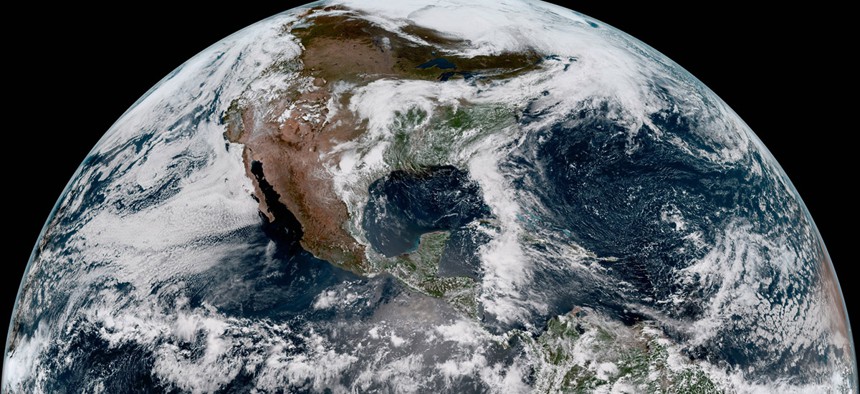Software Glitch Adds to Issues for NOAA’s Newest Weather Satellite

NOAA
Technicians have identified a software glitch in the GOES-17 weather satellite it launched in March.
Three months after working around a cooling system problem on one of the government’s newest weather satellites, the same GOES-17 satellite is dealing with issues regarding its infrared imagery apparently due to a software patching error.
The National Oceanic and Atmospheric Administration launched its next-generation Geostationary Operational Environmental satellite, dubbed GOES-17, in March with a target set to have the satellite operational by fall.
The operational date was delayed in May after engineers discovered a cooling problem with the satellite’s main camera—the Advanced Baseline Imager—that compromised the satellite’s functionality. On Thursday, NOAA officials moved the operational date back again to January 2019 after an “unrelated” issue with its ABI.
“The technicians determined that a recent update to software that controls the ABI cryocooler system (which pumps heat away from the instrument’s detectors to cool them to their required operating temperatures) caused a memory error. Automated safety checks onboard detected the error and initiated shutdown of the cryocooler, according to procedure,” NOAA officials said in a statement.
The cryocooler has since been restored, officials said, “with no additional degraded imagery as a result of the error.” However, NOAA said its engineers are “testing a permanent software solution” expected by January.
Once the fix is confirmed, NOAA officials said the agency will declare GOES-17 the new GOES West satellite. The satellite will provide coverage of weather patterns over the western hemisphere of the United States. It Is the first of the GOES-series satellites, which will collectively be worth as much as $10 billion and are considered vital to NOAA’s ability to track weather systems.
NEXT STORY: The IRS Is Now…on Instagram






